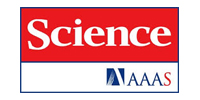Overview
Founded in 1880 on $10,000 of seed money from the American inventor Thomas Edison, Science has grown to become the world’s leading outlet for scientific news, commentary, and cutting-edge research, with the largest paid circulation of any peer-reviewed general-science journal. Through its print and online incarnations, Science reaches an estimated worldwide readership of more than one million. In content, too, the journal is truly international in scope; some 35 to 40 percent of the corresponding authors on its papers are based outside the United States. Its articles consistently rank among world’s most cited research.
Science’s leading position stems from many factors:
the journal’s strong tradition of editorial independence;
its high standards of peer review and editorial quality (of the more than 12,000 top-notch scientific manuscripts that the journal sees each year, less than 8% are accepted for publication);
its Board of Reviewing Editors, consisting of more than 100 of the world’s top scientists;
its strong connections with the scientific community, which ensures a stream of lively, up-to-date, and authoritative news and commentary in its pages;
the dedication of its professional staff in the U.S., the U.K., and other countries, including 26 Ph.D. editors, a creative production and art group, and a team of science writers, reporters, and journalists second to none;
the support of its publisher, AAAS, the world’s largest general-science society.
Today, a century and a quarter after its founding, Science continues to publish the very best in scientific research, news, and opinion. Whether you’re concerned with AIDS, SARS, genomic medicine, Mars, or global warming, or just want to keep abreast of where the scientific world is and where it’s going, you will find something worthwhile in Science.
